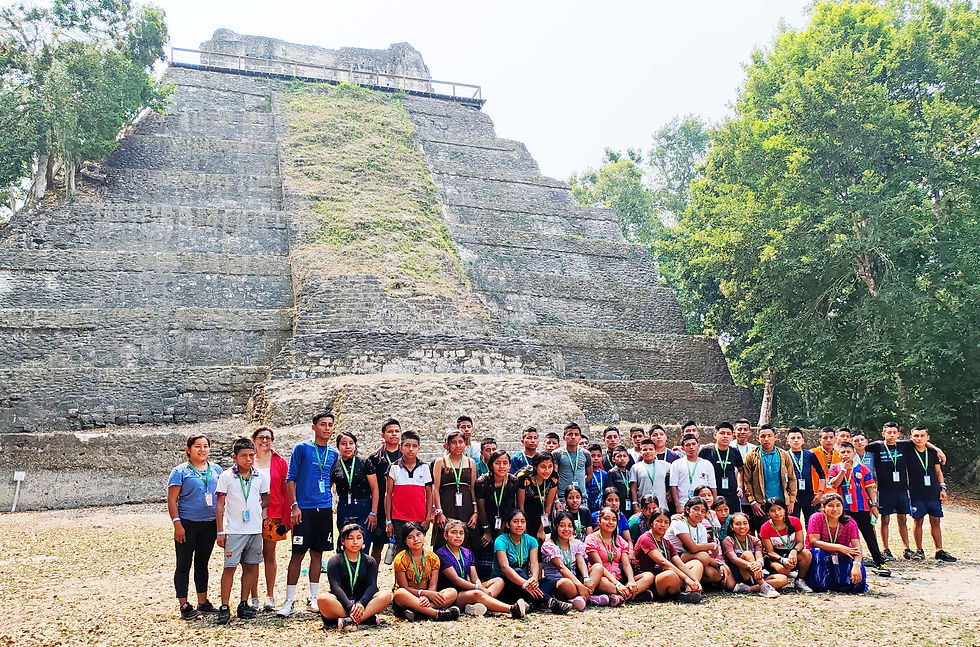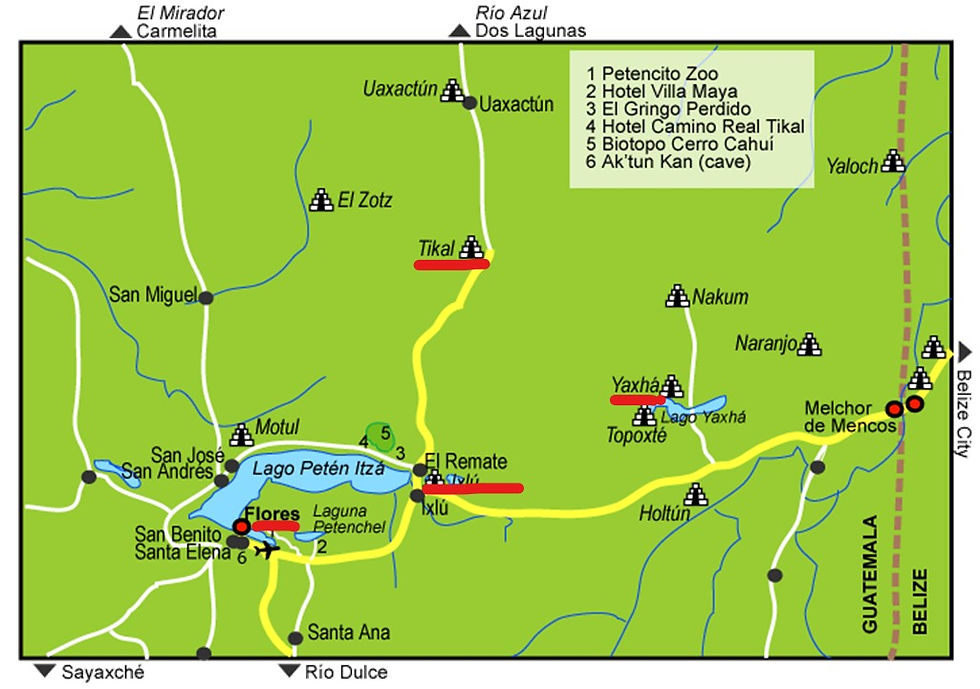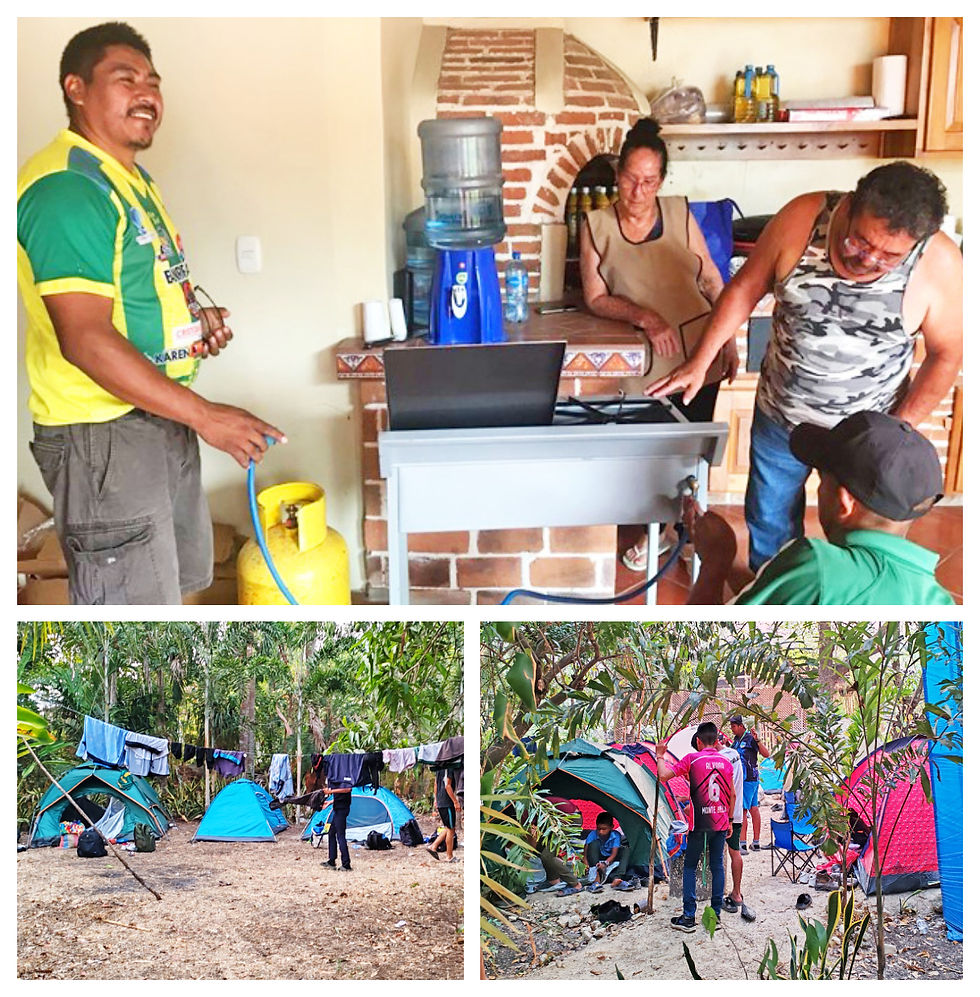Educational Field Trip to Maya Heritage Sites

This year’s students and staff visit to Maya archeological sites in the Petén region of Guatemala was a resounding success. The entire student body of both the Maya Jaguar middle and high schools, 48 in all, accompanied by 10 teachers and staff, three drivers, and four logistics volunteers spent almost a week (May 13-19) visiting several Maya cultural heritage sites and zoological preserve.
The first site visit was to the UNESCO site at Tikal, one of the major sites of Mayan civilization. Tikal was inhabited from the 6th century BC to the 10th century AD. The ceremonial center contains superb temples and palaces, and public squares accessed by means of ramps. Remains of dwellings are scattered throughout the surrounding countryside. While the group was touring Tikal, the heat soared to a record of 50C/122F. Despite the intense heat, the students were moved by the history of their own ancestors.

The group also visited the older Maya archeological site at Yaxhá, part of the Yaxha-Nakum-Naranjo National Park. Yaxhá was a ceremonial center of the pre-Columbian Maya civilization, founded between 1000 and 350 BC. It became the third largest city in the region and reached its maximum power 250–600 AD. The students reported how different the structures and pyramids were from those at Tikal. They appreciated that not all Maya sites look alike, and that Yaxhá was a few hundred years older than Tikal, though more recently discovered and undergoing restoration.
Due to the intense heat, the site visit planned for Wednesday was changed to a visit to El Remate, located on Lake Flores. Being on the lake brought a slightly cooler temperature along with nice breezes. The area was once the capital of the Itzá Maya people, who successfully resisted Spanish attempts to conquer them until 1697.
The last visit was to Flores Island where they visited the Petencito zoological preserve. All of the animals have been rescued and are being rehabilitated. Animals whose injuries are treatable are placed in “wild cages” out of reach of the public. This is to assure minimal intervention by humans and allows release back into the wild when they have recovered.
This year, the group was accompanied by an official from the Department of Education, responsible for monitoring such school trips in the state of Huehuetenango. She reported to us that this cultural and educational trip organized by the staff was superior to all she had accompanied, and complimented the students for their demeanor and obvious enthusiasm in learning about their Maya heritage.

Three staff members arrived in the Institute’s pick-up truck a day ahead of the group, bringing additional kitchen supplies and a portable gas stove.
The size of the group - students, teachers, staff, and volunteers - meant that the volunteer cooks prepared breakfasts, lunches, and dinners, plus mid-morning and mid-afternoon snacks for 60 mouths each day for five days!
Students and teachers/staff camped in tents in a campground for the duration of the week.
These trips are an invaluable resource for the students, who rarely, if ever, have an opportunity to travel beyond their villages. Most, if not all, have never been exposed to their history as a people. Adopt-a-Village in Guatemala believes it is essential for their education that these young people gain an appreciation for their rich cultural heritage - as a complement to the academic and technical studies at the Maya Jaguar schools.
